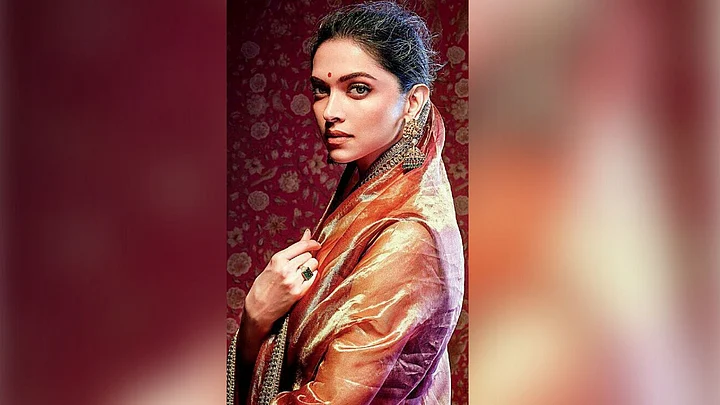Baldev Raj Chopra, popularly known as BR Chopra, always wanted to adapt the complex sweep of the Mahabharata for the big screen, but he wasn’t sure about the scope he could capture in a feature film. Instead of the song and dance routine, Chopra always favoured the idea of exploring social issues in his films, and he did so minus any fear of box office failure.

Looking back at BR Chopra’s greatest creation Mahabharat, on his birth anniversary
Though BR Films was launched in 1955, the Mahabharata eluded Chopra for decades. The opportunity only came knocking in the 80s when Doordarshan, India’s national broadcaster, got in touch with his production house to explore the possibility of an adaptation. This was also the time when Ramanand Sagar was approached for the adaptation of the Ramayana, and in no time, both Sagar and Chopra were ready with a few episodes to showcase what they were capable of. Looking at the expanse they would cover, and the pan-India appeal, there was no dearth of sponsors.

To avert a clash of the titans, DD made Chopra postpone his show, and Ramanand Sagar’s Ramayan came on air first. Though a veteran in films, Chopra was learning the ropes of TV, which was a new ballgame altogether. A few telefilms later, he produced Bahadur Shah Zafar, and Chopra’s son Ravi was itching for that big something in his career. Mahabharat provided that prospect, but it also meant that they would require a brilliant team of writers who could pin down the infinitely-dimensional, and intricately nuanced shades of the mythological saga. They settled with three: Rahi Masoom Reza for screenplay and dialogue, Satish Bhatnagar for scenarios and research, and Narendra Sharma to chip in his expertise on the epic. Sharma, who worked with All India Radio for a long haul, was an authority of such brilliance that the team depended on him for detailed descriptions, because he could mouth dialogues effortlessly.
It took more than six months to get the casting in place after thousands being put to screen-test, and the shooting started with more or less new faces, except Puneet Issar who invited nationwide infamy for injuring megastar Amitabh Bachchan during the filming of Coolie in 1983. While Mahabharat was being shot, Ramayan was already a stupendous success. It was nothing short of historic and the entire country was glued to television screens, following Ram and Laxman taking on Ravan, the demon king of Lanka.
Meanwhile, the Chopras were teetering with a gigantic issue. Because the epic is timeless, the opening monologue of Samay (Time) required a voiceover that had weight. Many suggestions came forward, finally, it was Harish Bhimani, a reputed name in the field of voiceovers, who came to rescue to give life to Reza’s dreamlike words, beginning with ‘Main Samay Hoon’.
After 24 months of shooting aided by hundreds of crew members, and even more numbers of actors, the entire industry was talking about Chopra’s ambition, that he finally managed to seize in his magnum opus. Costing around Rs 9 Crore, a magnificent sum at that time, it was shot mostly at Mumbai’s Film City, and the grand battle of Kurukshetra was shot in Rajasthan, with thousands of extras to fill the screen.
When Bhimani’s voice boomed and announced the arrival of Mahabharat on the small screen, Indian audiences realised that they were watching something new. While Ramayan had the saccharine and pious treatment of a mythological epic, Mahabharat had more dramatic value, leaving things ambiguous, and revealing a lot of uncomfortable truths. Something more than mythology, populated by believable beings, riddled by moral, amoral and more were coming to life.
As BR said in Mahabharat Ki Mahabharat, a documentary on the making of the show, “Aur kaha jaata hai, jo is mein nahin hain, woh kahin nahin hain”, he explored every possible shade in this adaptation, and the audience lapped it up, earning the broadcaster a fortune, along with the producers. But it was not short of criticism. The show was criticised for a very North Indian appropriation of the period drama, leaving multiple regional interpretations, and for having smoothened the deep reservoir of suffering that goes beyond winning and losing.
But for the larger Indian mass, it was the opening of a brave new world that was never caught beyond certain highlights in oral traditions. B. R. Chopra debunked the superstition of every Indian, and brought the epic to every Indian household, with dramatic heights, emotional webs, and musical tapestries. And for a kid growing up in that era, like yours truly, it was an action epic that began with ‘Atha Shree Mahabharat Katha’ with the fantasy of swords, bows, arrows and chariots coming to life with a gusto. Add to that, magic and miracles. Almost like desi Star Wars, with less juvenilia on display, and without the technical wizardry of Hollywood-land.
Indeed, it was a miracle if you consider the nascent age of Indian television and the ripe handling of the subject. Say thanks to Mr. B.R. Chopra.
(The writer is a journalist and a screenwriter who believes in the insanity of words, in print or otherwise. Follow him on Twitter: @RanjibMazumder)
(This article is from The Quint’s archives and was first published on April 22, 2016. It is now being republished to mark BR Chopra’s birth anniversary.)
(At The Quint, we question everything. Play an active role in shaping our journalism by becoming a member today.)
.jpg?rect=0%2C0%2C1920%2C1080&auto=format%2Ccompress&fmt=webp&width=720)
